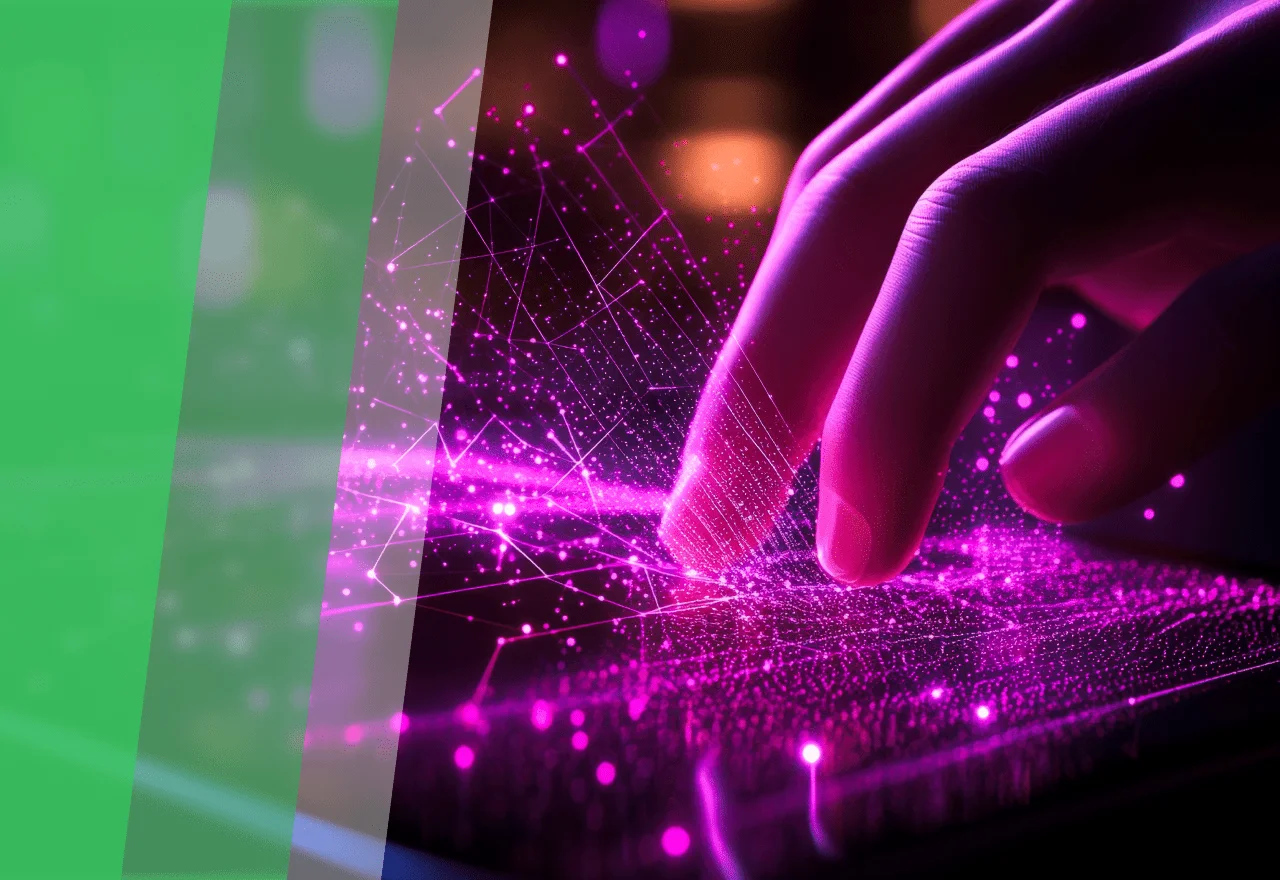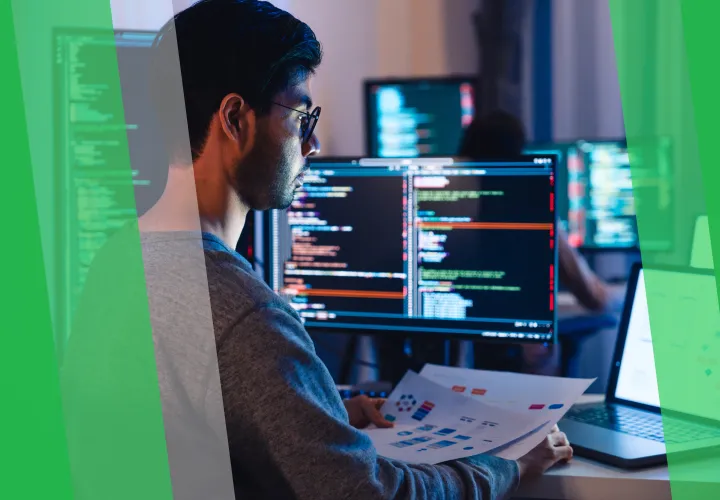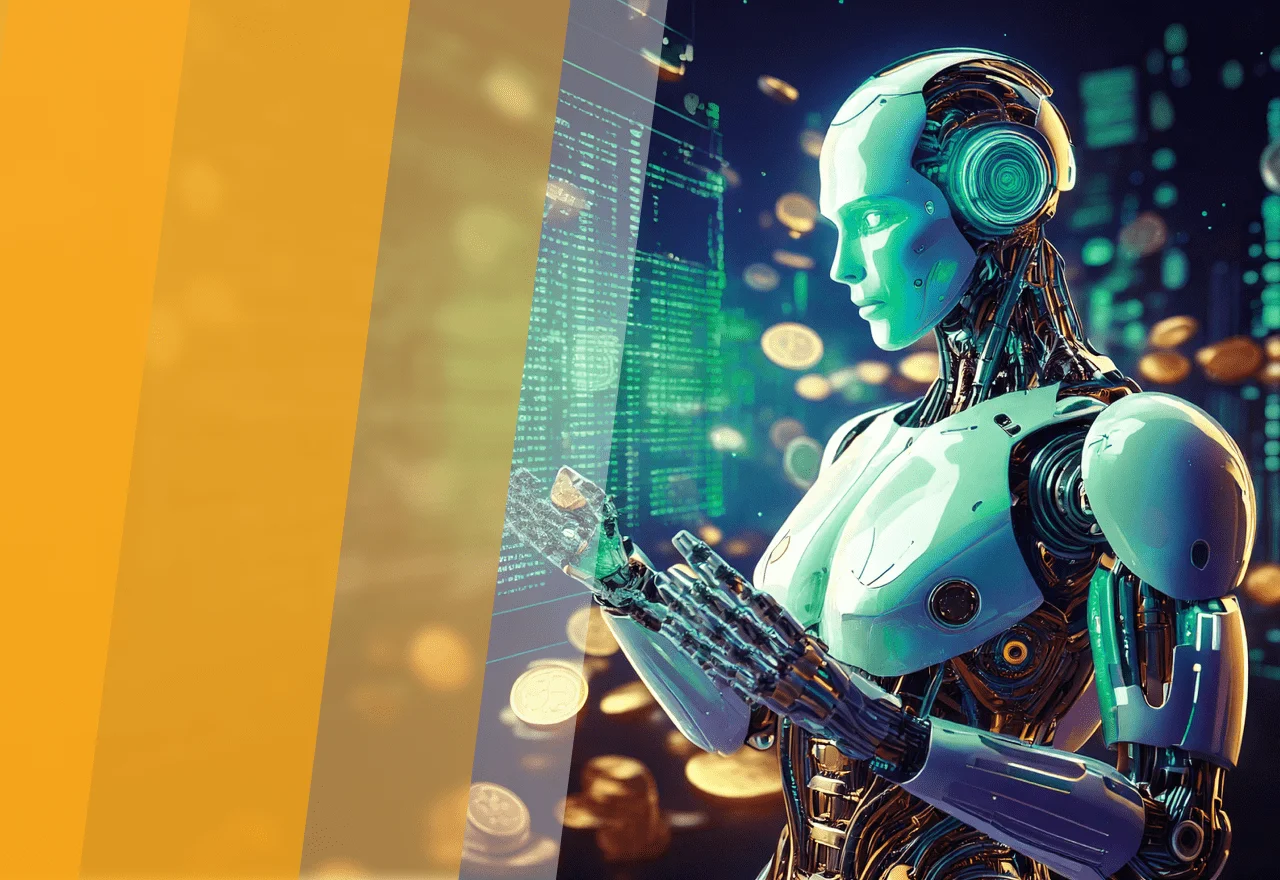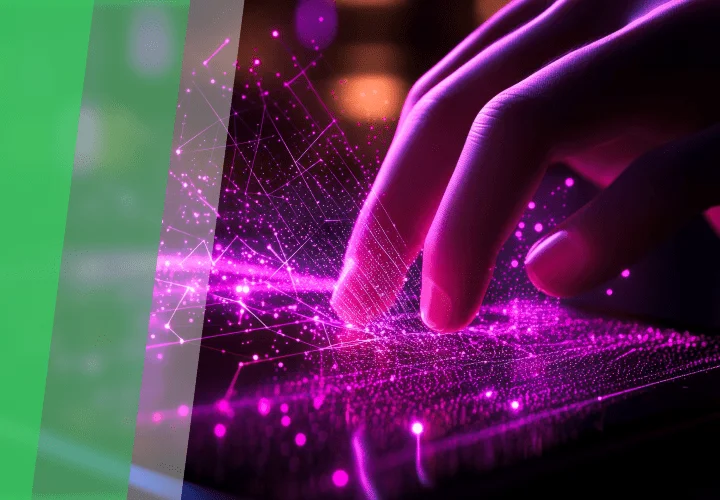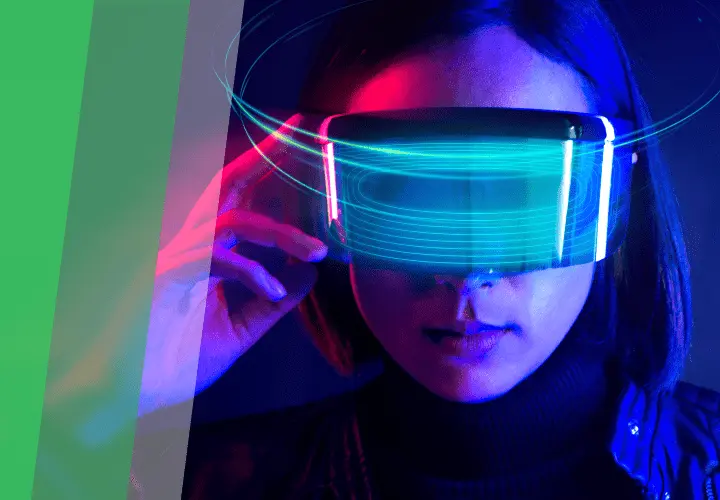The Internet of Everything and the Internet of Things: What’s What?
Table of contents
Living in an era of frequent technological advancements brings a challenge of understanding new concepts. One common area of confusion is the subtle difference between the Internet of Things (IoT) and the Internet of Everything. This post aims to clarify these distinctions, helping readers avoid further confusion.
What is IoT and IoE?
While due to its increasing popularity, IoT (Internet of Things) is a familiar concept to many, IoE (Internet of Everything) is fairly new and less clear. To shed more light on it, let’s start from the Internet of Everything definition.

This definition was offered by Cisco to describe the changing phenomenon of the Internet of Things. So does this mean that IoE replaces IoT, or that these two are the same thing?
Mind the difference between IoE and IoT
Even though quite often both terms are used interchangeably, they are actually applied to different things.
Internet of Things
Connects only physical objects (things).
Internet of Everything
Encompasses people, things, data, and processes.
In other words, the Internet of Everything can be defined as the extended version of the Internet of Things, or its new phase. To make the difference between IoE and IoT even more obvious, let’s also see how they operate.
Internet of Things
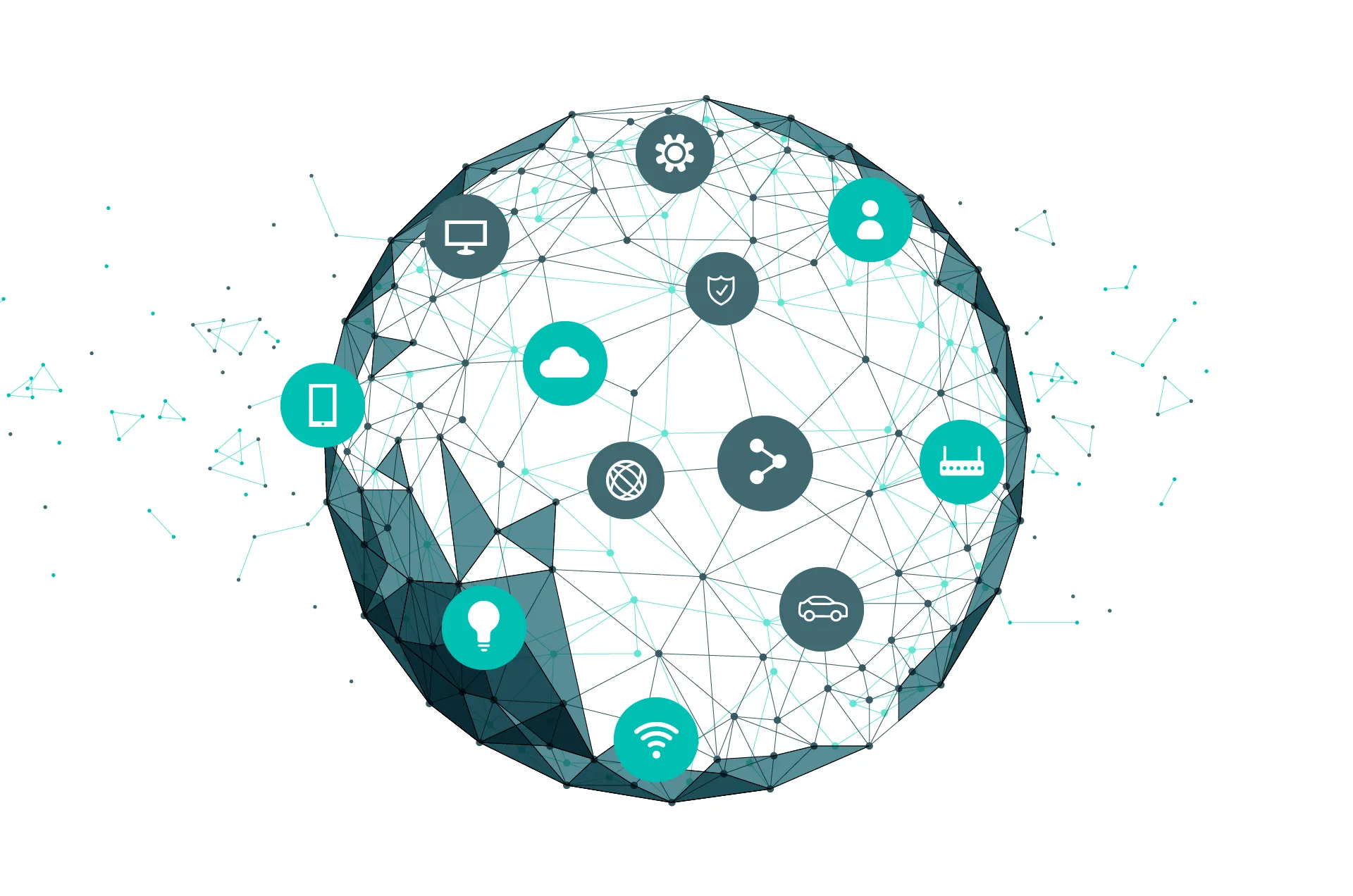
Things — devices, sensors, etc.— build a myriad of connections between each other, creating a network. In this way, IoT can be defined as a kind of Machine-to-Machine (M2M) communication technology.
Internet of Everything
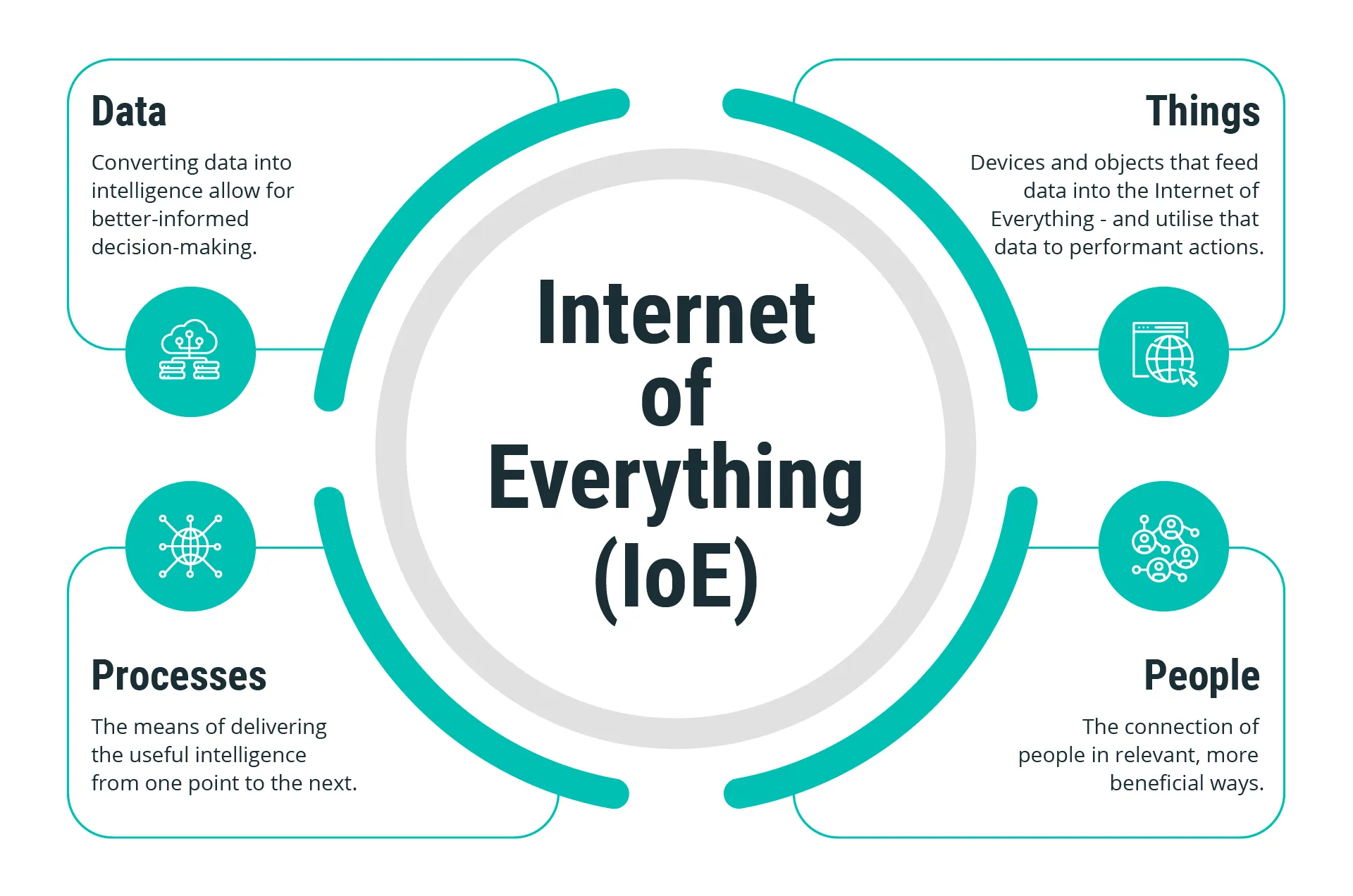 Each component in the IoE cycle is interrelated and creates a closed-loop that starts and ends with people:
Each component in the IoE cycle is interrelated and creates a closed-loop that starts and ends with people:
PEOPLE use THINGS that collect and produce DATA for its further PROCESSING (analysis and personalization), so, once again, PEOPLE can take advantage of it to make data-driven, smarter decisions.
Now, let’s go beyond and look at some Internet of Things and the Internet of Everything examples to get a clearer picture of how they differ.
Internet of Everything vs Internet of Things: the Impact on Different Industries
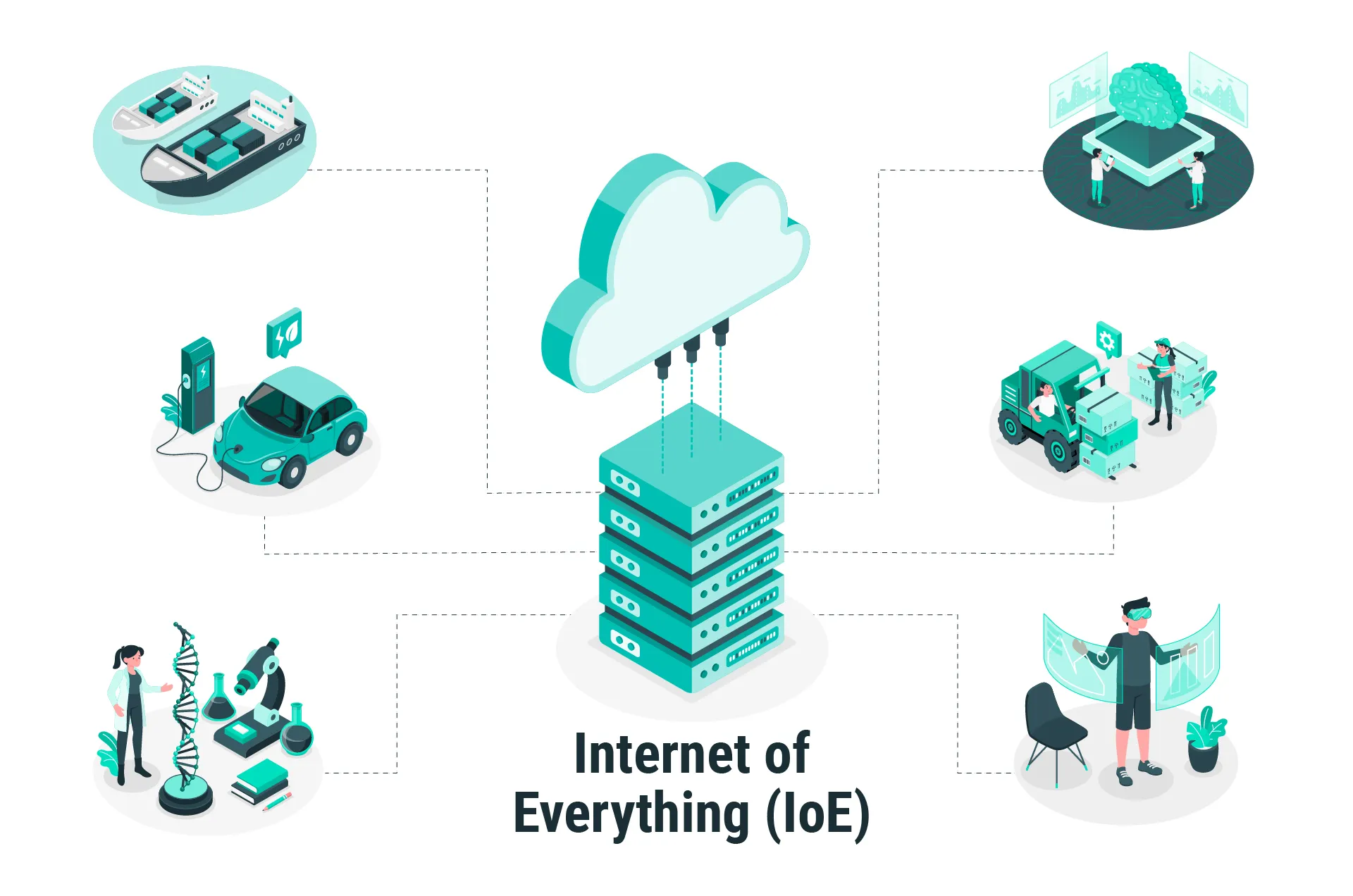
With the advent of the connected devices, the world literally went gaga over the opened up opportunities. But did that change with the introduction of IoE? To find the answer, let’s see where the Internet of Everything is used and how it contributes to different industries.
Healthcare
A policy director of the Federal Trade Commission’s new Office of Technology Research and Investigation Justin Brookman once jokingly described the way IoT technology works on example with toasters: he replaced the word Things with Toasters to stress that each device in the connected network is used to perform a certain task. This example begs the question of whether the technology really gives healthcare a huge promise or it just connects the bunch of toasters.
It was exactly the conceptualization of IoE that opened up space for the delivery of truly “living services” in healthcare. While IoT had sparked the wide use of wirelessly connected glucometers, scales, heart rate and blood pressure monitors, and other devices, the IoE allowed integrating them together, combining and analyzing data to make better, more personalized predictions and decisions, as well as to take meaningful actions.
Contextualization offered by IoE is considered to be the key driver for its success in healthcare. The research on the transformation of Parkinson’s disease care launched by IMB and Pfitzer shows how IoE can be used to help patients. It receives data from sensors installed in their houses, analyzes it with the machine learning algorithms, and in this way helps to get a greater understanding of how the disease develops and makes precisely targeted actions.
Retail
While the positive impact of connected devices on shopping should not be underestimated, the tastiest benefits could be enjoyed exactly with the Internet of Everything technology that enables the extraction of customer insights and the creation of new-level experiences.
One of the most illustrative examples of the Internet of Everything in retail was offered by Jim Grubb for Internet of Everything. The scenario described by the author tells about a Jody who browses in her phone near the toy section. So how does the Internet of Everything work in this case?
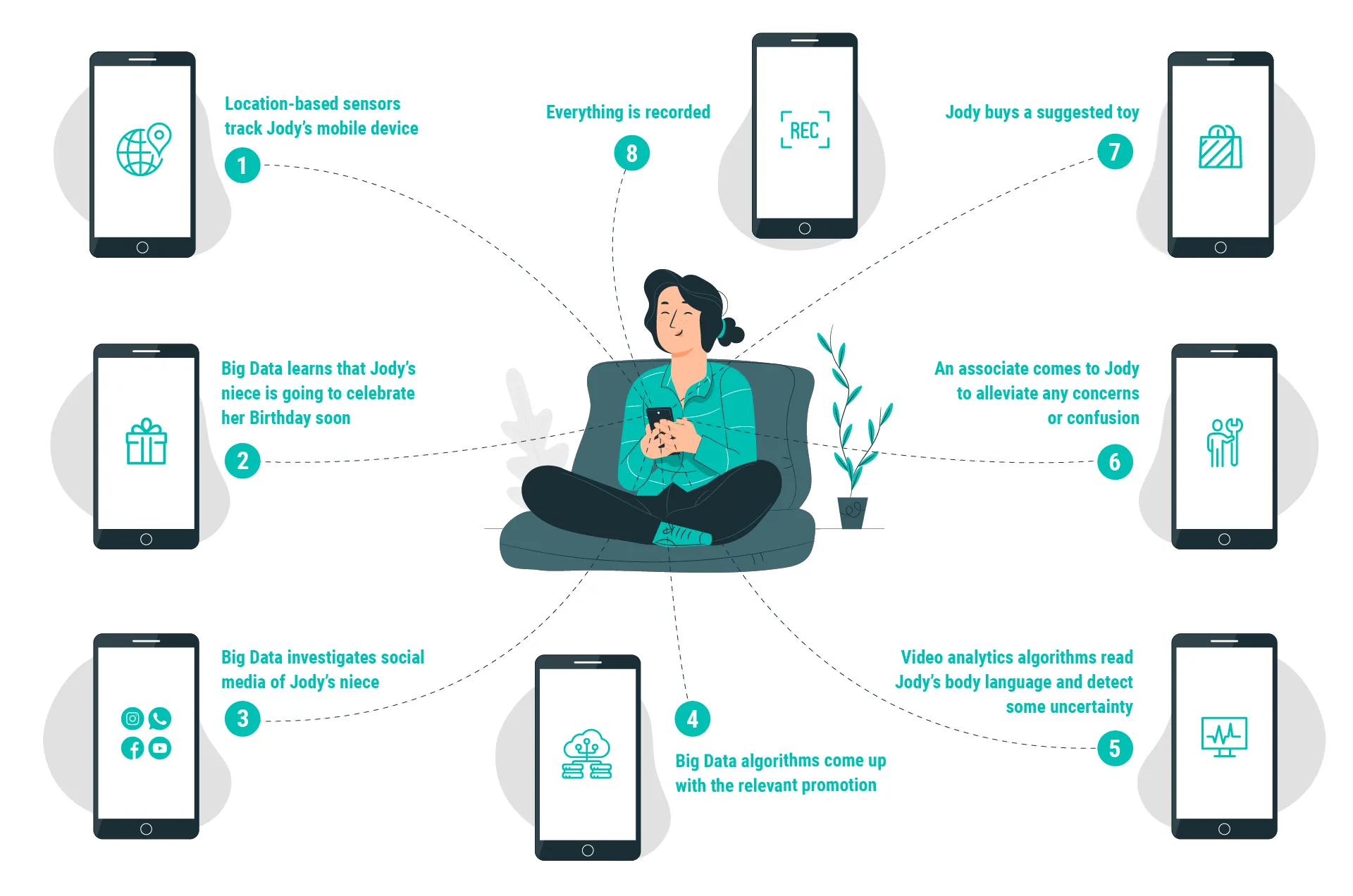
As you can see, both sides benefit from IoE: Jody can enjoy personalized service, while merchandisers get the opportunity to analyze the data to make their promotions better. And this is just one example of how the Internet of Everything contributes to a better shopping experience.
Energy
Energy consumption is probably one of the hottest issues of today’s world. While people all around the globe are looking for ways to reduce water loss and make their consumption smarter, IoT helps in achieving that by replacing traditional, labor-intensive work models with the one that takes advantage of smart technology. Nevertheless, the Internet of Everything allows significantly increasing the efficiency of technological solutions by connecting the unconnected and providing valuable insights for further improvements.
Smart water management and conservation solution created by Cisco for Israel’s largest municipal water utility is one of the best examples. Connecting the Supervisory control and data acquisition system with a GIS-enabled data management system, leak-detecting acoustic sensors, valve system, and ERP system, the IoE technology opened up space for the introduction of a cutting-edge Internet of Everything application that allows reducing non-revenue water loss and in this way ensure effective water conservation.
While there are just five use cases, it is worthy of saying that the benefits of the Internet of Everything extend to many other industries. The technology positively contributes to traffic management and road pricing, citizen services, connected learning, gas monitoring, smart buildings, etc. Despite its youth, it has already proven highly beneficial and promises even more value in the future.
Logistics
Integrating the Internet of Everything (IoE) into logistics yields many advantages, significantly enhancing operational efficiency. Leveraging IoT-enabled sensors facilitates real-time data collection, enabling companies to identify and address underperforming machines. This connectivity extends to asset synchronization, minimizing idle time, optimizing warehouse picking performance, and streamlining delivery processes. The result is a reduction in operational costs, a doubling of management component efficiency, and an overall enhancement of operational efficiency across the logistics chain.
Moreover, the impact of IoE on logistics extends beyond efficiency gains to address broader challenges. IoE's role in traffic management systems leads to reduced congestion through real-time data from carriers, airlines, and other sources. This information enables precise planning, enhancing the coordination of vehicles and minimizing delays. IoE contributes to safety improvements, transparent shipping processes, and even green logistics practices by monitoring resource consumption and emissions, showcasing IoT's multifaceted benefits to the logistics industry.
Remote Container Management (RCM) is a transformative use case of IoT and IoE within the logistics domain, exemplified by Maersk's innovative platform, Captain Peter. By leveraging continuous data flow from reefer containers, Captain Peter ensures unparalleled transparency in shipping perishable cargo, providing users comprehensive visibility into container conditions, including temperature, humidity, and atmosphere readings. The platform notifies users of any issues during transit and assists in decision-making for optimal business outcomes.
Warehouse management
Modern warehouse management IoE solutions enhance efficiency and mitigate potential financial losses. These solutions encompass a variety of smart devices, such as RFID tags, beacons, smart sensors, GPS trackers, AI cameras, smart HVAC systems, smart glasses, automated guided vehicles, and drones. Warehouse operators gain access to real-time data through these interconnected devices, enabling informed decision-making and remote process monitoring. This integration minimizes the need for a constant physical presence, leading to reduced labor costs and optimized operational processes.
The advantages of modern IoE solutions extend beyond operational efficiency. They enhance security by leveraging IoT devices to protect stocks and property against theft and unauthorized access. Furthermore, these devices enable the monitoring and control of environmental factors like temperature and humidity, preventing losses due to spoilage or damage.
For example, Corvus Robotics autonomous drone system Corvus One offers a subscription-based cutting-edge solution to scan and analyze inventory efficiently. This drone can safely and accurately scan 200-400 pallet positions in just one hour and can tie SKUs to slots in 3D space, syncing seamlessly with Warehouse Management Systems (WMS). The generated reports highlight discrepancies, sorted by location or SKU, providing actionable analytics for inventory discrepancy analysis.
If you have any questions, we are always here to provide you with comprehensive answers. Just feel free to ask.
The Wrap-up
To conclude, let’s briefly go over the facts on IoT vs IoE.
- The key takeaway is that, despite their similarities, IoT and IoE are distinct concepts.
- In the analogy of the chicken and the egg, IoT came first, and IoE is viewed as its enhanced, more comprehensive version.
- Unlike IoT, IoE not only connects things but also efficiently processes information, extracting valuable insights.
- Many applications labeled as “IoT with data analytics” are, in fact, IoE applications.
Emerline teams are open to both IoT and IoE projects and are ready to offer strong expertise to companies willing to incorporate smart technologies into their businesses. Internet of Things and Internet of Everything solutions created by Emerline positively impact tens of companies operating across various industries, including healthcare, entertainment, energy, warehouse, retail, banking, etc.
If you have any questions, we are always here to provide you with comprehensive answers. Just feel free to ask.
Updated on Apr 11, 2024
